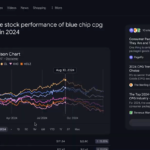There are plenty of useful ways to process your data and utilize analytics to make decisions for your business. In a world where big data is becoming more and more prevalent, data analytics is more important than ever. By leveraging data analytics, you can gain insights into your data that can help you make better business decisions.
A pyramid chart is an efficient way to compare and contrast data. The wide base of the pyramid represents the lowest data point, while the narrowing apex represents the highest data point. This type of chart is ideal for displaying information that changes over time, or for illustrating the relative size of different data sets.
What is a pyramid chart?
A pyramid chart is a graphical representation of data in which the width of the bars is proportional to the magnitude of the data. The bars in a pyramid chart are typically arranged in a triangular shape, with the largest bar at the base and the smallest bar at the top.
There are plenty of different answers to the question ”why use a pyramid chart?” Pyramid charts are often used to compare different data sets, or to compare data at different points in time. They can also be used to visualize hierarchical data, such as the levels of a company’s organizational chart.
Understand the different types of pyramid charts.
There are different types of pyramid charts, but all are used to display hierarchical data. The most common type is the inverted pyramid, which displays the largest quantity at the bottom and the smallest at the top. This type is used to show the relative proportions of different parts of a whole. Other types of pyramid charts include the symmetrical pyramid, which displays data in two halves that are mirror images of each other, and the 3-D pyramid, which gives a three-dimensional view of the data.
A pyramid chart is a great way to visualize data.
A pyramid chart is a great way to visualize data because it illustrates how a large quantity is divided into smaller quantities. This is a helpful way to see how a whole is divided up and to track changes in data over time. Additionally, pyramid charts are visually appealing and can be easily understood by people of all ages.
See how the data is grouped and how it is related to each other.

A pyramid chart is perfect for illustrating hierarchical data. The pyramid chart’s hierarchical structure makes it easy to see how the data is grouped and how it is related to each other. This makes it an ideal visualization for showing the relative importance of data points, as well as the flow of data from one group to another. Additionally, the pyramid chart is highly customizable, making it easy to tailor the visualization to your specific needs.
Pyramid charts are used to show the relative size of data.
Pyramid charts are used to show the relative size of data. They are perfect for displaying data in a way that is easy to understand. The chart starts with the largest data point and works its way down to the smallest data point. This allows viewers to see how the data is distributed and how it is changing over time. Pyramid charts are a great way to compare data sets and see how they compare to one another.
How do you make a pyramid chart in Excel?
A pyramid chart is ideal for visually representing data with a hierarchical structure. It can be used to compare and contrast data, show changes over time, or illustrate proportions.
To create a pyramid chart in Excel, you will need an Excel spreadsheet, a data set, and basic knowledge of graphing functions. To create your pyramid chart, first enter your data into the spreadsheet. Next, you’ll select the data you want and create a pyramid chart type. Feel free to adjust the data series to create your desired pyramid. Save and share your chart to gain insights into your company’s operations.
Discover more from TechBooky
Subscribe to get the latest posts sent to your email.







